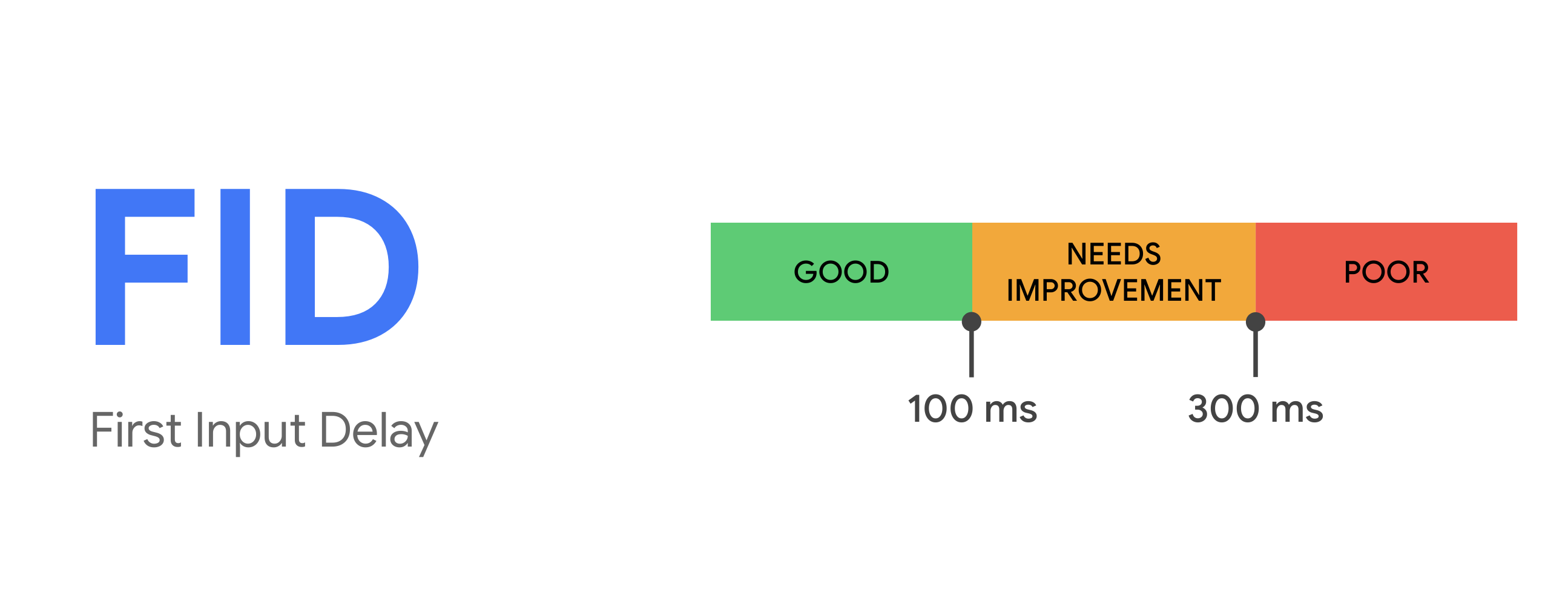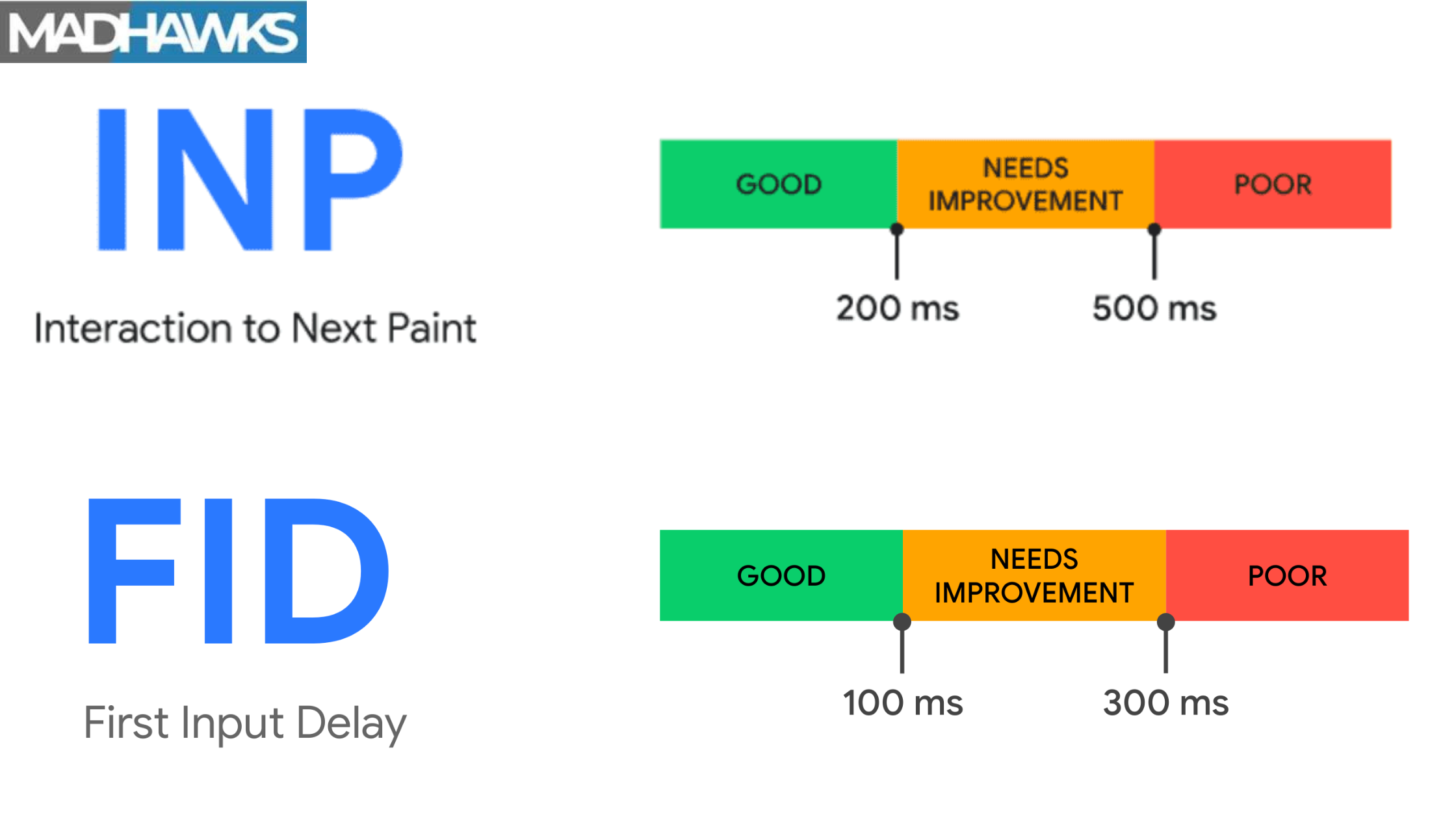INP (Interaction to Next Paint) Becomes The New Google Core Web Vital
Posted By Gaurav | 13-Mar-2024 | Search Engine Optimization
INP (Interaction to Next Paint), has been officially added to core web vitals by Google today, i.e. on March 12, 2024. We were already expecting this update as the news of FID being replaced by INP has been there for the last few months. On January 31 this year, Google announced that INP will become an official core web vital, replacing FID on March 12. Following the same, the company has added INP to its core web vital program. FID is no longer a core web vital metric and has been removed from the program.

What is INP?
INP stands for Interaction to Next Paint. It is a new core web vital metric that is used to assess the responsiveness of a webpage. INP uses data from the Event Timing API. A webpage with poor responsiveness results in poor user experience. By observing the latency of all interactions made by a user, INP will assign each webpage a value that almost all interactions were below.
What is a Good INP Score?
As INP has finally been launched, Google Search Console reports will no longer show FID metrics. Now, you will be able to see INP scores in the core web vitals report. Let us understand what is a good INP score so that you can measure the responsiveness of your web pages and make improvements accordingly. To deliver a good user experience, you must ensure that at least 75% of your pages have a good responsiveness:
- Good Responsiveness: An INP score less than or equal to 200 milliseconds
- Needs Improvement: An INP score between 200 milliseconds and 500 milliseconds.
- Poor Responsiveness: An INP score above 500 milliseconds.
How is INP Different From FID?

INP replaced FID (First Input Delay) and became the new official core web vital metric. FID was also related to the responsiveness aspect of a website. But over time, the need for a new metric was felt. FID could not capture several aspects of interactivity on the web, which INP will be doing. Although both the metrics measure interactivity and engagement on a webpage, they have different implications.
INP focuses on the time taken by a page to process and load the response from an interaction on the screen. It analyzes and measures page responsiveness quickly after a user sees something happening after interacting with a webpage. On the other hand, FID measures responsiveness from a user’s first interaction with a webpage to the browser’s response to that interaction.
How Can You Prepare?
To prepare your website for this change, you should first measure the INP score of your website and figure out if it passes the ‘good responsiveness’ threshold. If 75% of your web pages have an INP score up to 200 milliseconds, you don’t need to worry. However, if your INP score lies in the ‘needs improvement’ or ‘poor’ segment, you will have to make necessary improvements.
In such a case, Google advises finding slow interactions in the field and manually diagnosing them in the lab. Once you find out the problem, you will have to figure out which parts of the interaction you need to optimize for. INP is quite complex and it means that you will be optimizing for interactivity in multiple ways. But it is totally worth the time and effort. Improving INP scores for your website can help you achieve your goals faster.
What Our SEO Experts Have to Say?
As an SEO agency, our team understands how core web vital metrics can help improve the user experience of a webpage. Now as we will be shifting our focus from FID to INP, optimizing interactivity in multiple ways will be a crucial part of SEO strategies. Identifying and reducing input delay is one of the most important steps you can take to improve your INP score.
While it is important to improve your website’s responsiveness, our experts recommend not to get obsessed with just the INP score. When browsing your website, you can clearly see whether it is responsive or not. If you see massive ranking drops, it might be because Google has released the March core update, multiple spam updates, and also launched this new core web vital all during the same time.
Just try to identify the issues and make the necessary changes as soon as possible. For any further assistant or to know about our SEO services, get in touch with us today!
FAQs
1. What is INP in Core Web Vitals?
Ans. INP, Interaction to Next Paint, has replaced FID to become the new core web vital. It has been officially added to the core web vital program by Google. INP assesses the responsiveness of a webpage.
2. What are INP issues?
Ans. If your website has a poor INP score, you can improve it by optimizing for interactivity in multiple ways. Techniques like reducing the page size, optimizing scripts and images, identifying and reducing input delay, etc, can help improve INP issues of your website.
3. How can I improve my INP score?
Ans. If the INP score of your website is above 200 milliseconds, it means that your website needs improvement. You can improve it by finding slow interactions in the field and diagnosing these slow interactions in the lab.
4. How can MadHawks help pass INP Metrics?
Ans. MadHawks is a reputed SEO company with years of experience in the industry. The team of SEO professionals at MadHawks understands different important aspects of interactivity and ways to optimize them to improve a website’s INP score.

